Abstract
A mouse monoclonal antibody (LICR-LON/HT13) has been developed to a cell-surface antigen carried on a human germ-cell tumour xenograft (HX39). After radioiodination, the antibody localized in vivo preferentially in xenografted tumours as opposed to normal mouse tissue, whereas tumor uptake did not occur with normal mouse IgG or nonspecific monoclonal IgG. This selective localization could be abolished by simultaneous injection of an excess of the unlabelled LICR-LON/HT13. The kinetics of and factors influencing localization have been examined. Tumour weight was important in that the smaller the tumour the better the localization. LICR-LON/HT13 was found to localize also in other xenografted germ-cell tumours, but not in non-germ-cell tumour xenografts. Thus monoclonal antibodies are capable of selective in vivo localization of human tumours in an animal model, and their clinical value should now be assessed.
Full text
PDF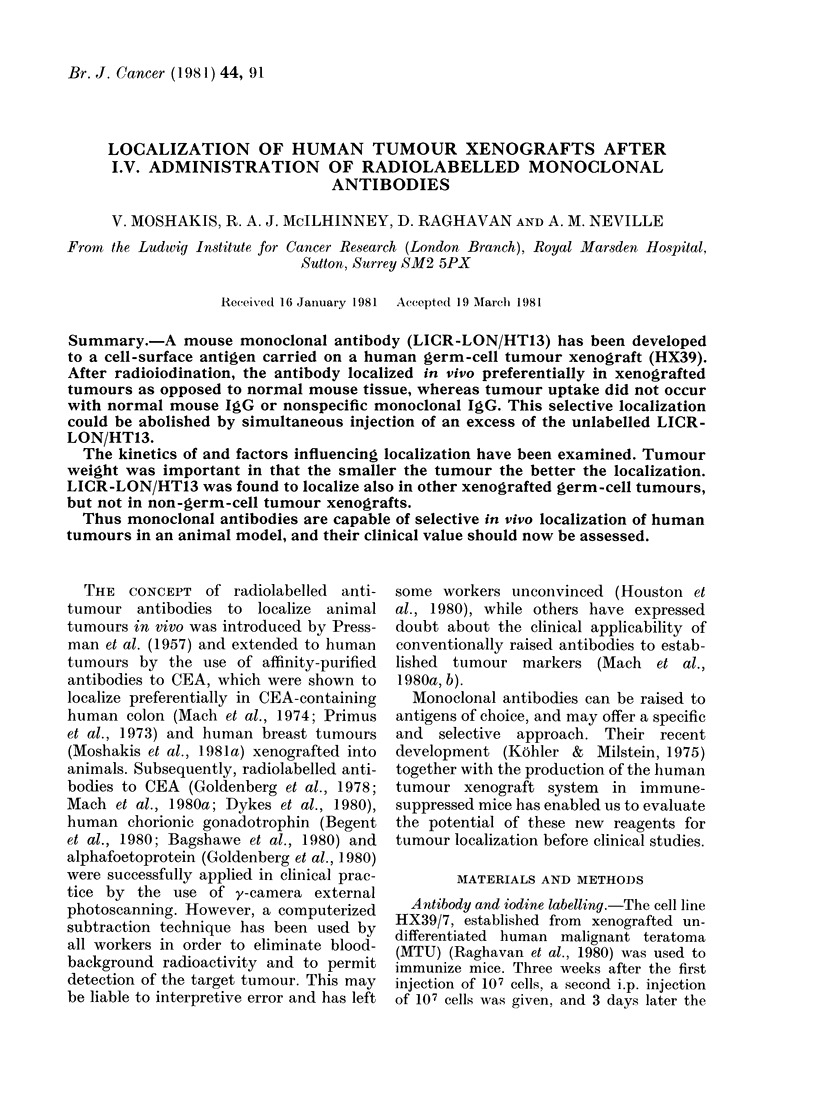
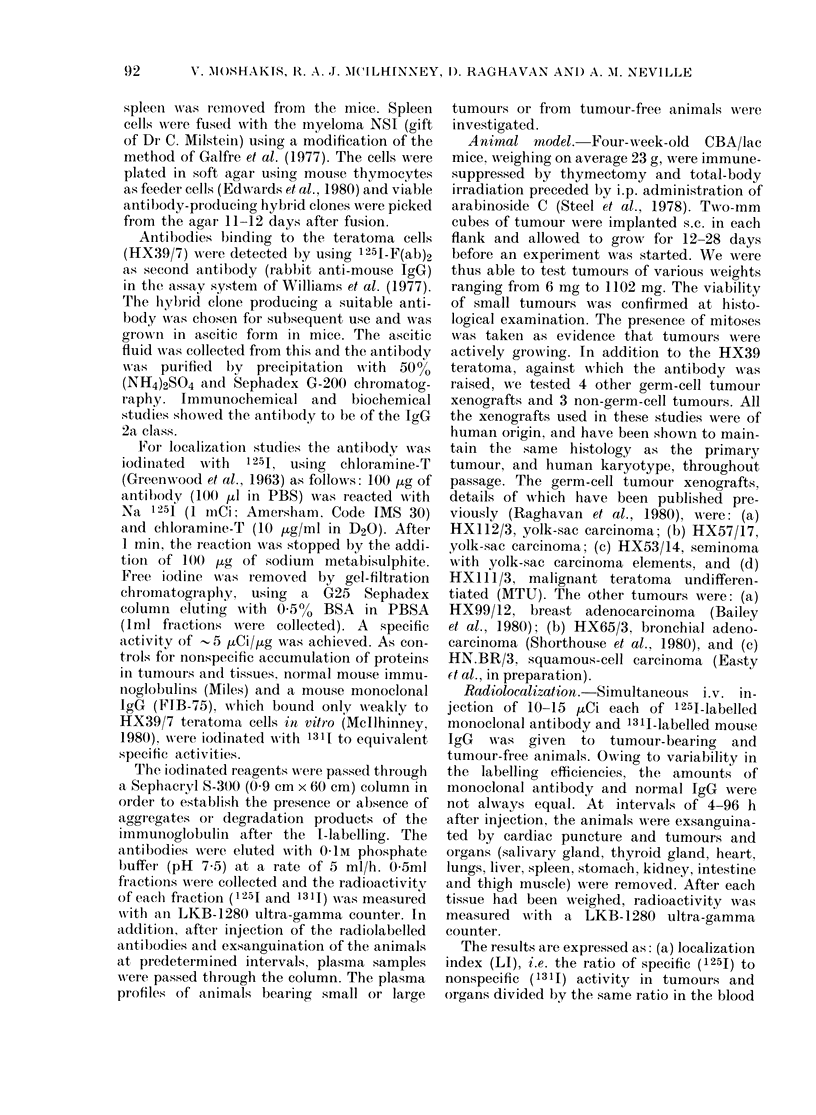
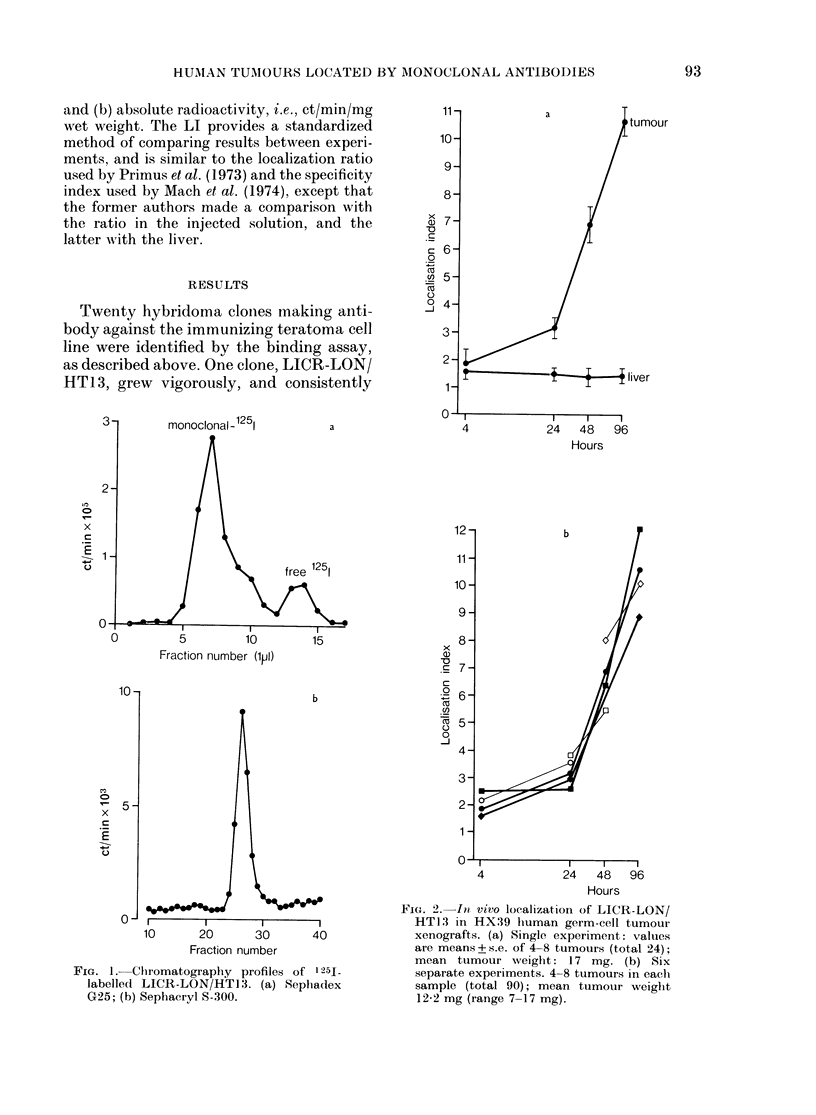
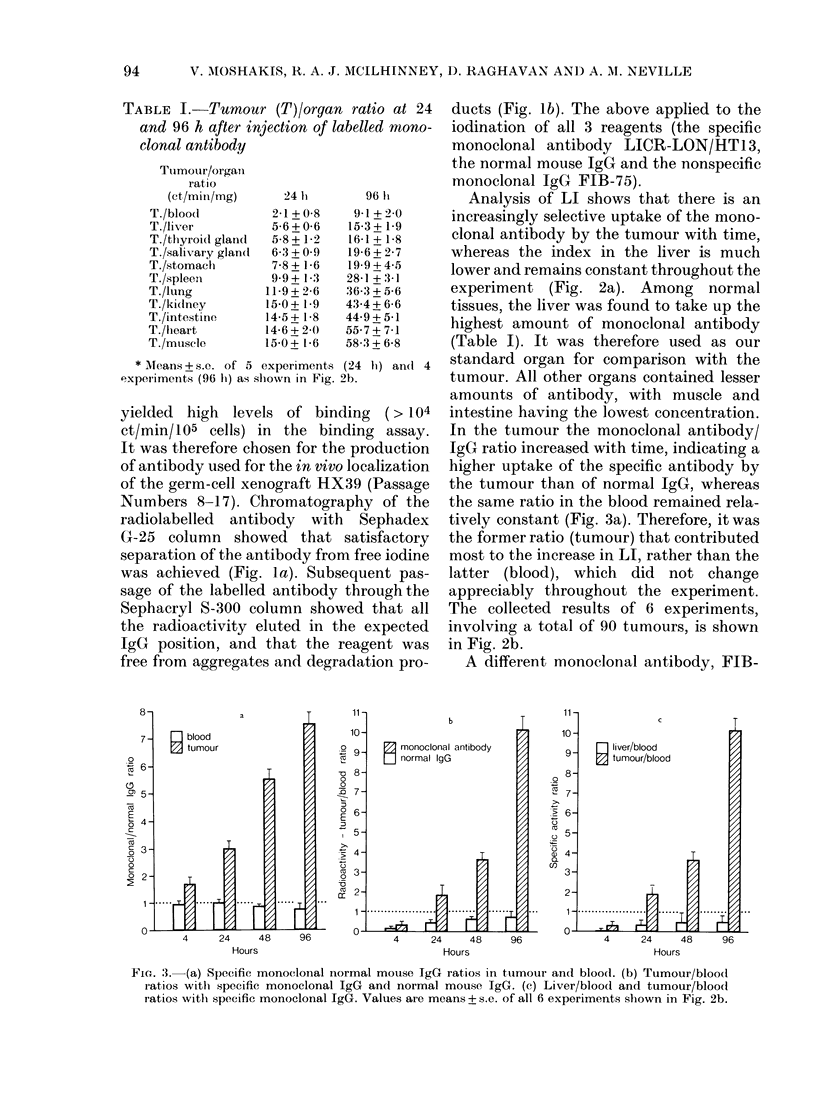
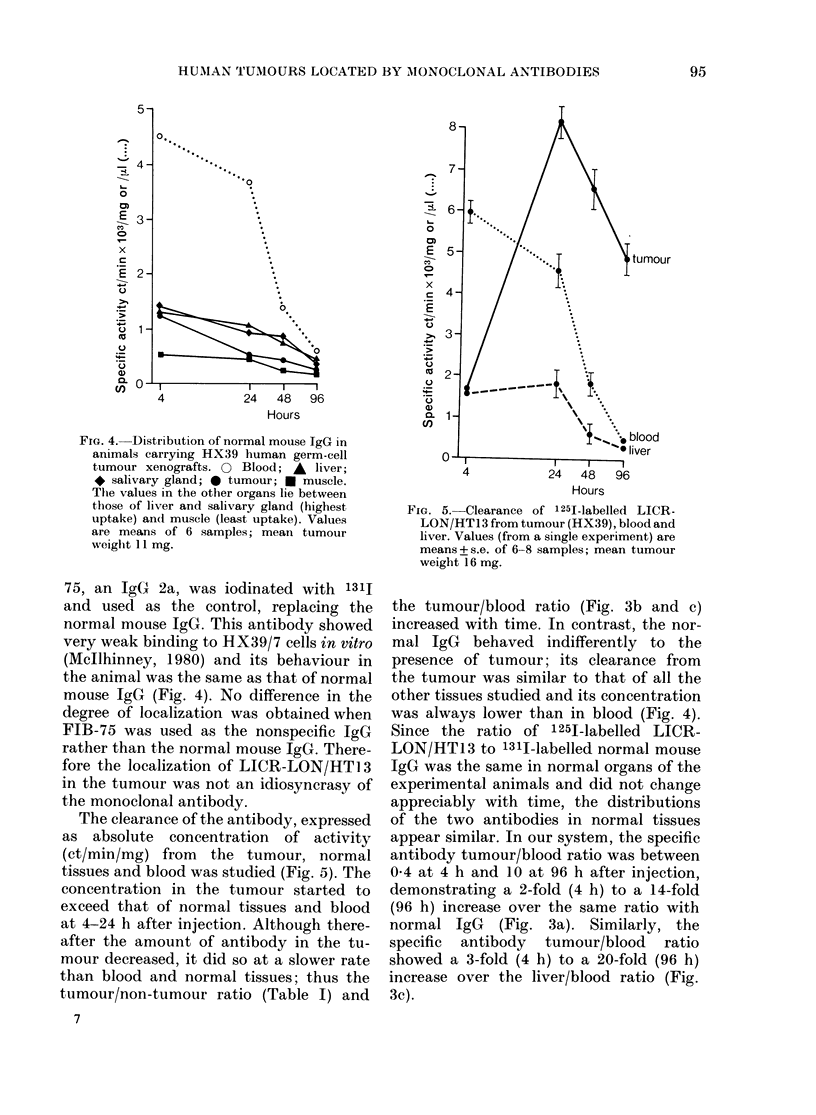
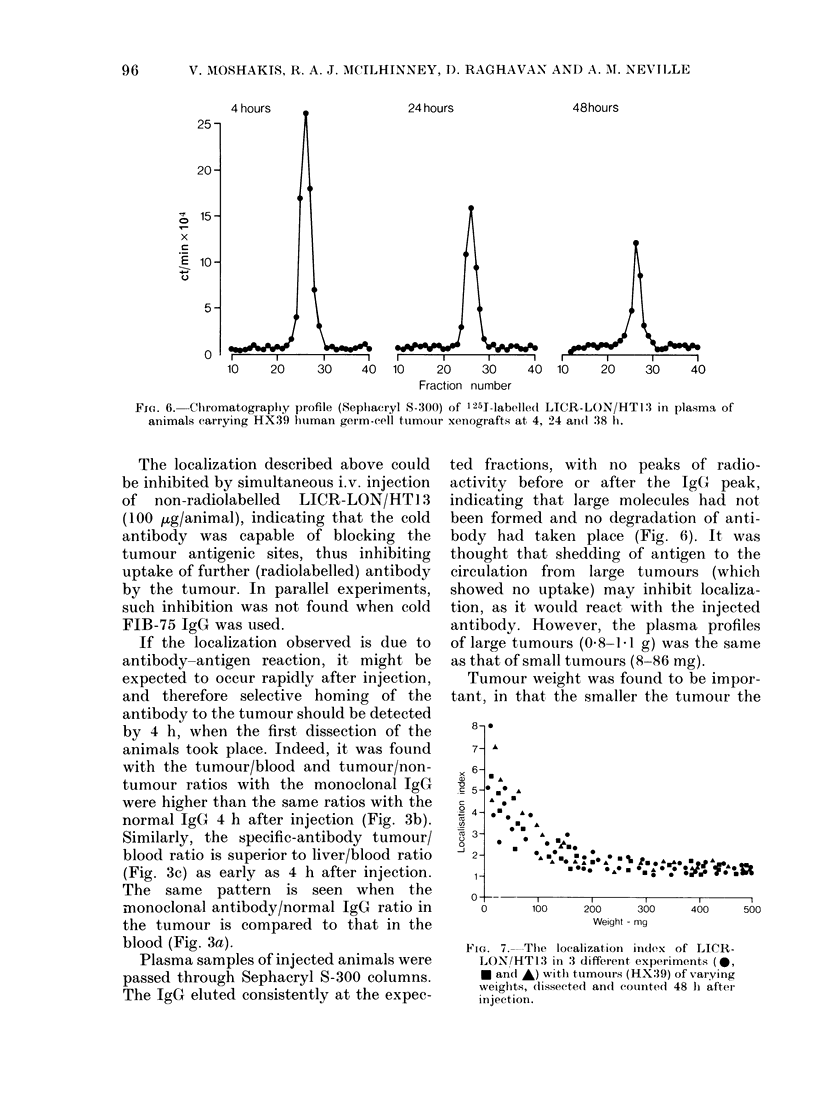

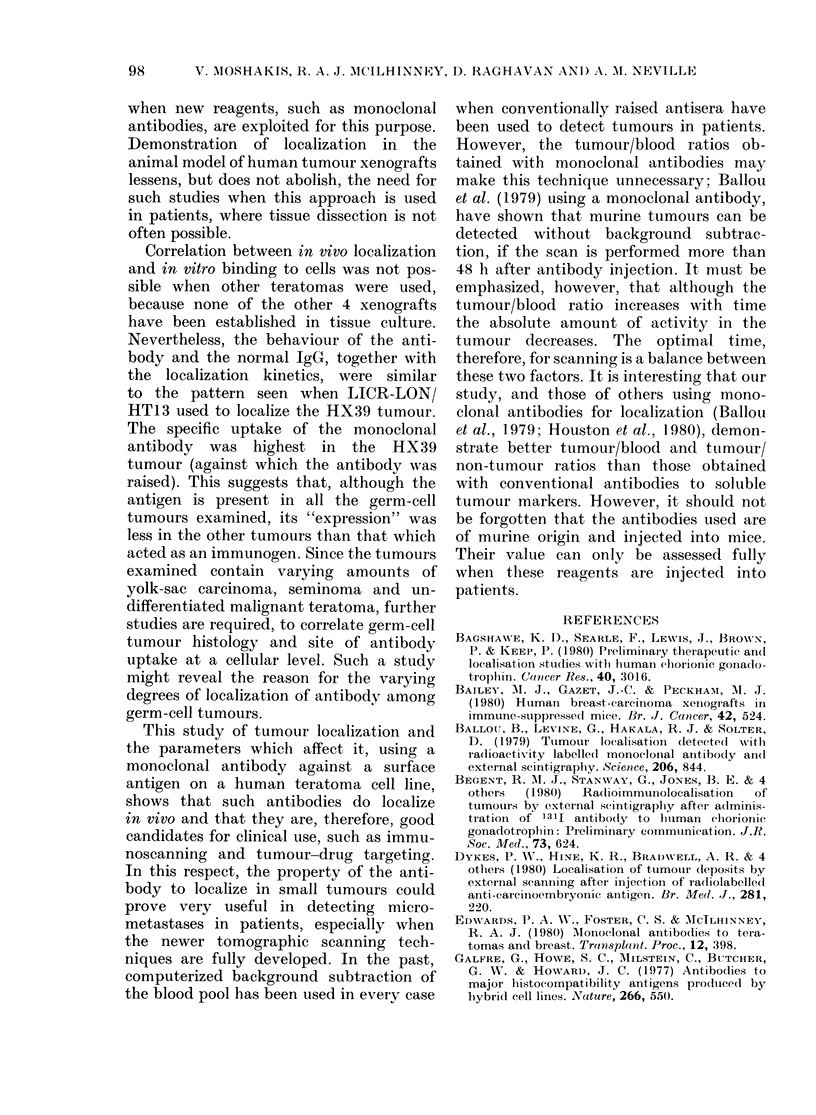
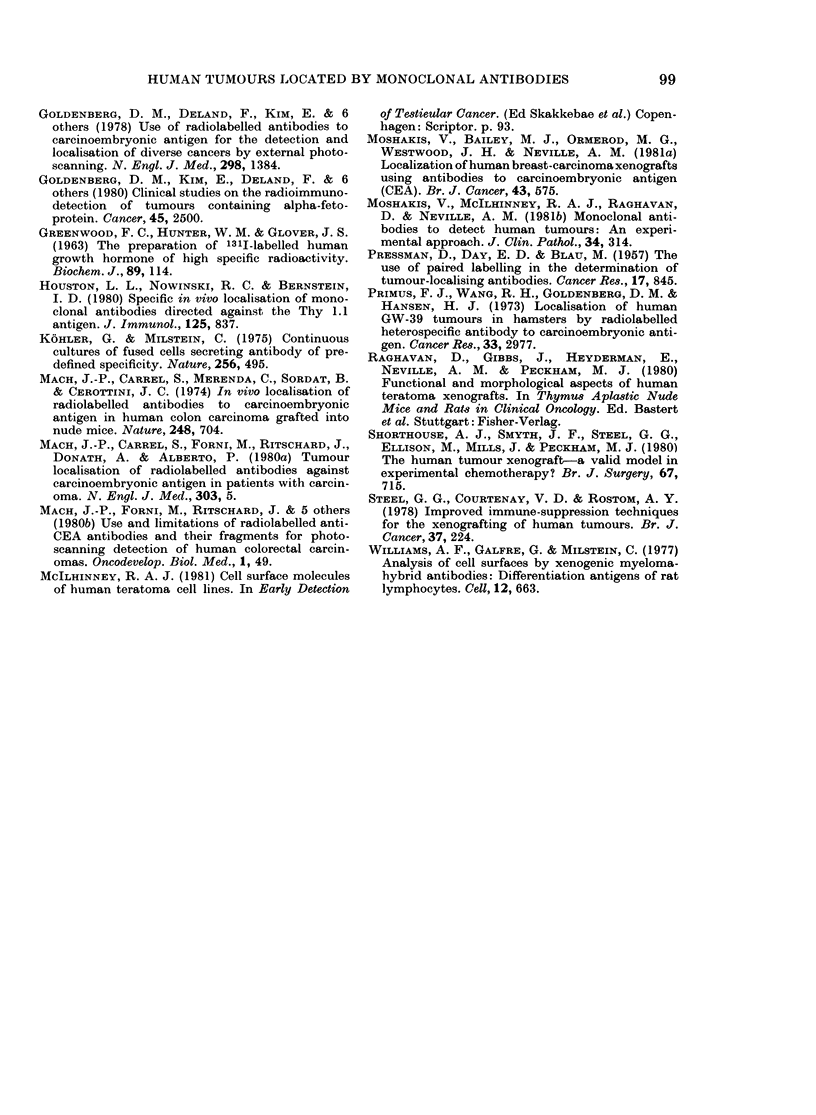
Selected References
These references are in PubMed. This may not be the complete list of references from this article.
- Bagshawe K. D., Searle F., Lewis J., Brown P., Keep P. Preliminary therapeutic and localization studies with human chorionic gonadotrophin. Cancer Res. 1980 Aug;40(8 Pt 2):3016–3017. [PubMed] [Google Scholar]
- Bailey M. J., Gazet J. C., Peckham M. J. Human breast-cancer xenografts in immune-suppressed mice. Br J Cancer. 1980 Oct;42(4):524–529. doi: 10.1038/bjc.1980.275. [DOI] [PMC free article] [PubMed] [Google Scholar]
- Dykes P. W., Hine K. R., Bradwell A. R., Blackburn J. C., Reeder T. A., Drolc Z., Booth S. N. Localisation of tumour deposits by external scanning after injection of radiolabelled anti-carcinoembryonic antigen. Br Med J. 1980 Jan 26;280(6209):220–222. doi: 10.1136/bmj.280.6209.220. [DOI] [PMC free article] [PubMed] [Google Scholar]
- GREENWOOD F. C., HUNTER W. M., GLOVER J. S. THE PREPARATION OF I-131-LABELLED HUMAN GROWTH HORMONE OF HIGH SPECIFIC RADIOACTIVITY. Biochem J. 1963 Oct;89:114–123. doi: 10.1042/bj0890114. [DOI] [PMC free article] [PubMed] [Google Scholar]
- Galfre G., Howe S. C., Milstein C., Butcher G. W., Howard J. C. Antibodies to major histocompatibility antigens produced by hybrid cell lines. Nature. 1977 Apr 7;266(5602):550–552. doi: 10.1038/266550a0. [DOI] [PubMed] [Google Scholar]
- Goldenberg D. M., DeLand F., Kim E., Bennett S., Primus F. J., van Nagell J. R., Jr, Estes N., DeSimone P., Rayburn P. Use of radiolabeled antibodies to carcinoembryonic antigen for the detection and localization of diverse cancers by external photoscanning. N Engl J Med. 1978 Jun 22;298(25):1384–1386. doi: 10.1056/NEJM197806222982503. [DOI] [PubMed] [Google Scholar]
- Goldenberg D. M., Kim E. E., Deland F., Spremulli E., Nelson M. O., Gockerman J. P., Primus F. J., Corgan R. L., Alpert E. Clinical studies on the radioimmunodetection of tumors containing alpha-fetoprotein. Cancer. 1980 May 15;45(10):2500–2505. doi: 10.1002/1097-0142(19800515)45:10<2500::aid-cncr2820451006>3.0.co;2-j. [DOI] [PubMed] [Google Scholar]
- Houston L. L., Nowinski R. C., Bernstein I. D. Specific in vivo localization of monoclonal antibodies directed against the Thy 1.1 antigen. J Immunol. 1980 Aug;125(2):837–843. [PubMed] [Google Scholar]
- Köhler G., Milstein C. Continuous cultures of fused cells secreting antibody of predefined specificity. Nature. 1975 Aug 7;256(5517):495–497. doi: 10.1038/256495a0. [DOI] [PubMed] [Google Scholar]
- Mach J. P., Carrel S., Forni M., Ritschard J., Donath A., Alberto P. Tumor localization of radiolabeled antibodies against carcinoembryonic antigen in patients with carcinoma: a critical evaluation. N Engl J Med. 1980 Jul 3;303(1):5–10. doi: 10.1056/NEJM198007033030102. [DOI] [PubMed] [Google Scholar]
- Mach J. P., Carrel S., Merenda C., Sordat B., Cerottini J. C. In vivo localisation of radiolabelled antibodies to carcinoembryonic antigen in human colon carcinoma grafted into nude mice. Nature. 1974 Apr 19;248(5450):704–706. doi: 10.1038/248704a0. [DOI] [PubMed] [Google Scholar]
- Moshakis V., Bailey M. J., Ormerod M. G., Westwood J. H., Neville A. M. Localization of human breast-carcinoma xenografts using antibodies to carcinoembryonic antigen. Br J Cancer. 1981 May;43(5):575–581. doi: 10.1038/bjc.1981.86. [DOI] [PMC free article] [PubMed] [Google Scholar]
- Moshakis V., McIlhinney R., Raghavan D., Neville A. M. Monoclonal antibodies to detect human tumours: an experimental approach. J Clin Pathol. 1981 Mar;34(3):314–319. doi: 10.1136/jcp.34.3.314. [DOI] [PMC free article] [PubMed] [Google Scholar]
- PRESSMAN D., DAY E. D., BLAU M. The use of paired labeling in the determination of tumor-localizing antibodies. Cancer Res. 1957 Oct;17(9):845–850. [PubMed] [Google Scholar]
- Primus F. J., Wang R. H., Goldenberg D. M., Hansen H. J. Localization of human GW-39 tumors in hamsters by radiolabeled heterospecific antibody to carcinoembryonic antigen. Cancer Res. 1973 Nov;33(11):2977–2982. [PubMed] [Google Scholar]
- Shorthouse A. J., Smyth J. F., Steel G. G., Ellison M., Mills J., Peckham M. J. The human tumour xenograft--a valid model in experimental chemotherapy? Br J Surg. 1980 Oct;67(10):715–722. doi: 10.1002/bjs.1800671011. [DOI] [PubMed] [Google Scholar]
- Steel G. G., Courtenay V. D., Rostom A. Y. Improved immune-suppression techniques for the exongrafting of human tumours. Br J Cancer. 1978 Feb;37(2):224–230. doi: 10.1038/bjc.1978.30. [DOI] [PMC free article] [PubMed] [Google Scholar]
- Williams A. F., Galfrè G., Milstein C. Analysis of cell surfaces by xenogeneic myeloma-hybrid antibodies: differentiation antigens of rat lymphocytes. Cell. 1977 Nov;12(3):663–673. doi: 10.1016/0092-8674(77)90266-5. [DOI] [PubMed] [Google Scholar]


